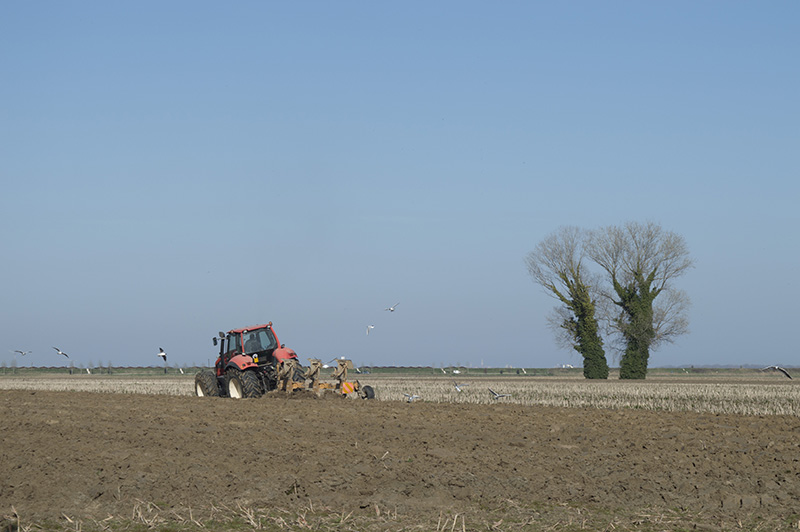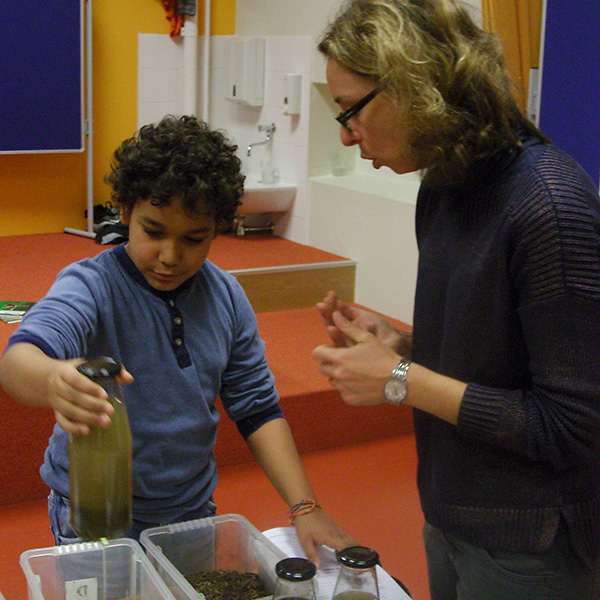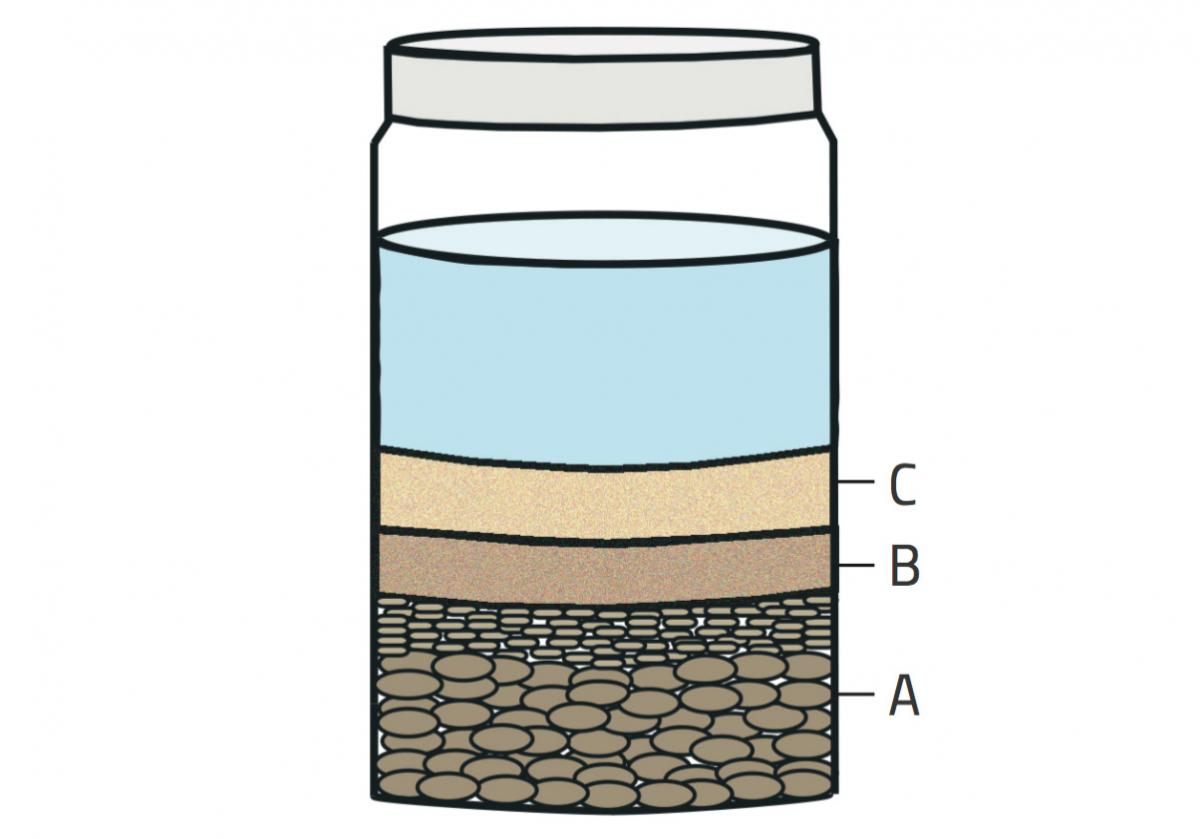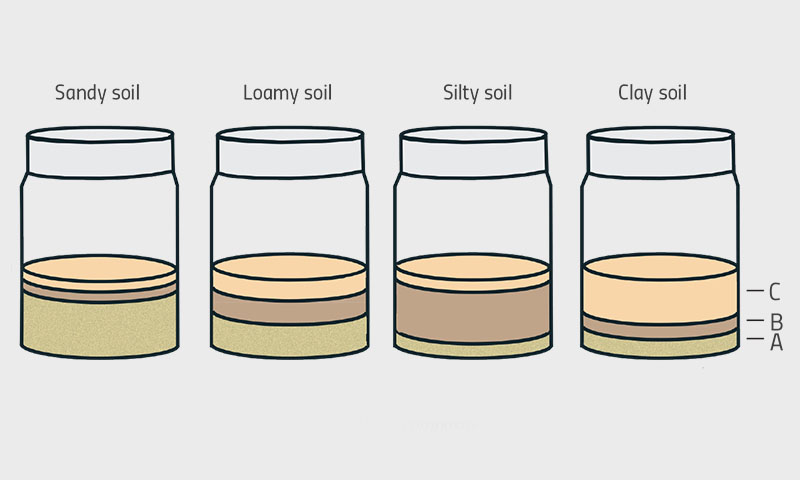Field research: discovering the structure of soil Teach article
Get your hands dirty with these classroom experiments exploring the composition of soil – and find out why this matters.
Soil is essential for life on this planet. Without it, we could not grow the food we need to live. What’s perhaps less well known is that soil has other important functions, too, such as filtering our water, storing it to help prevent flooding and droughts, and providing a habitat for a third of the world’s biodiversity – most of which we still know very little about. Soils also have a large impact on climate change, as they can store large amounts of organic carbon and are the most important terrestrial sink for carbon dioxide (Janzen, 2004).
The way we use land has a clear influence on the way soil functions, and thus on all the benefits we gain from it. The more that soil is disturbed through building activities, intensive agriculture, digging or ploughing, the greater the loss of organic matter, which in turn increases the danger of soil erosion, where soil is washed away. Adding organic matter (such as manure) to soil can rebuild its organic content and improve the soil structure, ensuring lower nutrient loss and helping to prevent soil erosion.
Erosion is a problem for all of us: studies estimate that around 11% of European Union (EU) land is currently affected by soil erosion to a moderate or high level (that is, more than 5 tonnes per hectare per year)w1. Not only does erosion decrease the fertility of the land, but it also increases sedimentation in streams and rivers, clogging up waterways and leading to more flooding. And whenever farmland soil and sediments are washed into rivers, they bring the pesticides and fertilisers with them, contributing to the pollution of river habitats.

Jane Mills
Soil structure and organic matter
The structure of the soil and how much organic matter it contains have a high impact on the rates of soil erosion.
Soil structure is the arrangement of soil particles (clay, silt and sand) into aggregates, which are groups of soil particles that bind together more strongly than neighbouring particles. A good soil structure is important because it allows air and water into the soil, which are vital for healthy plant growth. Without a good structure, soils will suffer from a lack of oxygen, waterlogging and nutrient lock-up, which means plants are unable to absorb nutrients from the soil and will ultimately perish. Soil aggregates are more stable than individual soil particles, so they increase the soil’s ability to avoid breaking down when acted on by water, wind and tillage.
Organic matter in soils consists of all living and dead plant and animal matter. It includes seeds, leaves, roots, earthworms and manure, as well as bacteria, fungi and humus (decayed plant material). Soils with a higher organic matter content are better at storing nutrients and water, and at delivering them to plants. Soil structure is also very dependent on organic matter content: the higher it is, the better the soil structure tends to be. Organic matter is usually concentrated in the upper 10–40 cm of the soil, since this is where plant production and decay take place. The top layer of soils that have been disturbed by tilling or construction work may no longer be rich in organic matter, so its stability could therefore be reduced.
Soil structure: a student activity
For most students, particularly those who live in cities, the world below their feet remains unknown. To remedy this, we developed a two-part activity to help students to gain insights into the role that soil structure and its organic matter content has for all of us. It is suitable for students aged 11–16. Activity 1 will need 1–2 hours for soil sample collection, plus 1 hour in the classroom. Activity 2 requires revisiting at hourly intervals for 4 hours.
Materials
- Two glass jars with lids (e.g. empty jam jars)
- Wire (at least 30 cm)
- Wire cutters
- Spade or trowel
- Collection bags or boxes for soil samples
- Two soil samples from different sites (see procedure section)
- Water
- Clock or stopwatch
Activity 1: Soil samples and stability
In this activity, students carry out a simple experiment to collect soil samples and test their stability, and thus learn from experience which types of soil are likely to be more prone to erosion. In the activity, topsoil from an undisturbed site is compared to soil taken from a disturbed site of a similar soil type. The activity can be carried out by individual students or in groups.
Procedure
- First, obtain the two samples. These should be taken from each of the following locations:
- The top 5–10 cm of soil from an undisturbed site (e.g. students’ own garden, a park, the school garden)
- Soil from a disturbed site (e.g. a construction site, soil that has been well dug over).
- When taking these soil samples, walk in a zig-zag line and take a small sample (about the size of a walnut) at each turning point. Press the soil samples gently together, so you have 2–3 handfuls in the end.
- Fill the jars with water, and arrange the wires across the top of each jar to form simple ‘baskets’ that dip into the water (see figure 1).
Barbara Birli
- Put a small soil sample from each site into a basket, both at the same time. Record the time (or start the stopwatch).
- Observe the soil samples after one minute (figure 2a) and again at one-minute intervals (up to 7–10 minutes up to 7–10 mins; figure 2b) and record your observations. Note which soil sample seems to be most stable (stays in the basket) and which is the least stable (quickly crumbles into the jar).
Barbara Birli
Barbara Birli
Students then discuss their results and try to answer the following questions:
- Which soil type was more stable when placed in the jars?
- Which of the two soil types do you think contained the most organic matter? Why?
Class discussion
Students will probably have seen from the experiment that soil from the surface layer of a lawn, orchard or a field that has not been disturbed or tilled for a couple of years will hold together in a wire mesh basket, even when immersed in water. Often the soil clods will hold together so well that the water will evaporate before the soil falls apart.
In contrast, soil that has been recently disturbed (such as a well-dug garden, a continuously tilled field or a construction site) will generally fall apart (disperse) into individual soil particles when immersed in water. The loose soil will make the water cloudy, eventually settling to form a layer of sediment in the bottom of the jar.
So why is this? One reason is that organic matter contributes to the stability of soil aggregates through the bonding properties of organic materials such as bacterial waste products, fungal hyphae and worm secretions and casts. These materials provide the ‘glue’ that holds soil together. Organic matter also contains hydrophobic substances, such as lipids and waxes, that can reduce the soil’s ‘wettability’, helping it to hold together when there is a lot of water present. It also increases the quantity of very small pores in the soil, reducing the rate at which water enters the soil and the consequent disruption of the aggregates.

and water before letting it
stand for 4 hours
Barbara Birli
Activity 2: The mineral mix
All soils contain mineral matter (gravel, sand, silt, clay), as well as organic matter. In this activity, students find out about the mineral composition of their soil samples.
Procedure
- Looking at your water-filled jars from the previous activity, select any jars where the soil has disintegrated.
- Remove the baskets, place the lids on the jars and shake them well.
- Watch what happens, revisiting the shaken jars after one minute and at hourly intervals for the next 4 hours. Note your observations.
- Finally, compare your jars after 4 hours to the diagrams in figure 4 showing the composition of different soil types. What type of soil do you think your samples are?

Jane Mills

Jane Mills
Class discussion
After a few minutes, students will probably have seen heavier sandy particles dropping to the bottom of the jar. In 2 hours, they should see the silt separate out, and after 4 hours the water should clear completely with all the layers visible (figure 3).
What do these layers tell us about the type of soil in the jars – and, importantly, how useful the soil is for growing crops? The answer is that it depends on the relative amounts of the different types of mineral matter, as shown in figure 4. There are four main types of soil, which each have different advantages and disadvantages for farmers:
- Sandy soil (0–10% clay, 0–10% silt, 80–100% sand): This is light to work with and warms quickly in spring. But water drains through it rapidly to places where the roots cannot reach it.
- Clay soil (50–100% clay, 0–40% silt, 0–45% sand): This retains water longer, but takes time to warm up in spring, and it can be very heavy to work with if it gets dry.
- Silty soil (0–15% clay, 85–100% silt, 0–20% sand): This is fairly fertile, but due to its tendency to retain moisture, silty soil is cold and drains poorly.
- Loamy soil (10–30% clay, 30–50% silt, 25–50% sand): This is the type that farmers and gardeners prefer. It contains a balance of all three mineral materials – silt, sand and clay.
Acknowledgment
The preparation of this article was supported by the RECARE project, in which the authors are partners. The RECARE project, which is funded by the European Commission FP7 Programme, aims to find and share solutions to prevent soil degradation across Europe.
References
- Janzen H (2004) Carbon cycling in earth systems – a soil science perspective. Agriculture, Ecosystems and Environment 104: 399-417. doi: 10.1016/j.agee.2004.01.040
Web References
- w1 – This factsheet from Eurostat (‘Agri-environmental indicator: soil erosion’) gives an overview of soil erosion in the EU.
Resources
- For an educational information about soil, visit this webpage from the US Department of Agriculture.
- Read an accessible fact sheet on soil aggregates from Cornell University, USA.
Review
Earth science is often not the most popular subject in school curricula, and the topic of soil science in particular can be seen as quite boring. This perception can be challenged by the activities proposed in this article.
The article, which is clear and accessible for non-native English speakers, presents soil characteristics in an inspiring way through simple, hands-on experiences that are easily carried out in the classroom without special equipment. Teachers can also widen their knowledge of the topic through the suggested web resources.
Given the global importance of soil stability and soil erosion, the article is relevant in any European country. It could be used as a starting point for starting a discussion on global land use and soil erosion in relation to food production and the growing world population.
The article can also be used as a comprehension exercise. Here are some possible questions:
- Which of the following components is NOT part of the organic matter in the soil?
- Bacteria
- Humus
- Silt
- Manure
- Are the following statements true or false?
- Water drains easily through sandy soils.
- Silty soil is not fertile.
- Clay soil is hard to work.
- Loamy soil is rich in clay.
- Clay soil warms quickly.
- Gardeners prefer silty soil.
- Which is the correct sedimentation order of these soil components (from the fastest to the slowest)?
- Clay, silt, sand
- Sand, silt, clay
- Silt, clay, sand
- Silt, sand, clay
Giulia Realdon, natural sciences teacher, Italy





